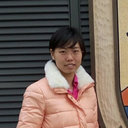Survey of duckweed diversity in Lake Chao and total fatty acid, triacylglycerol, profiles of representative strains.
Klíčová slova
Abstraktní
Lemnaceae (duckweeds) are widely distributed aquatic flowering plants. Their high growth rate, starch content and suitability for bioremediation make them potential feedstock for biofuels. However, few natural duckweed resources have been investigated in China, and there is no information about total fatty acid (TFA) and triacylglycerol (TAG) composition of duckweeds from China. Here, the genetic diversity of a natural duckweed population collected from Lake Chao, China, was investigated using multilocus sequence typing (MLST). The 54 strains were categorised into four species in four genera, representing 12 distinct sequence types. Strains representing Lemna aequinoctialis and Spirodela polyrhiza were predominant. Interestingly, a surprisingly high degree of genetic diversification within L. aequinoctialis was observed. The four duckweed species revealed a uniform fatty acid composition, with three fatty acids, palmitic acid, linoleic acid and linolenic acid, accounting for more than 80% of the TFA. The TFA in biomass varied among species, ranging from 1.05% (of dry weight, DW) for L. punctata and S. polyrhiza to 1.62% for Wolffia globosa. The four duckweed species contained similar TAG contents, 0.02% mg · DW(-1). The fatty acid profiles of TAG were different from those of TFA, and also varied among the four species. The survey investigated the genetic diversity of duckweeds from Lake Chao, and provides an initial insight into TFA and TAG of four duckweed species, indicating that intraspecific and interspecific variations exist in the content and composition of both TFA and TAG in comparison with other studies.



